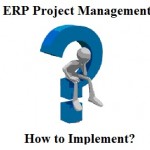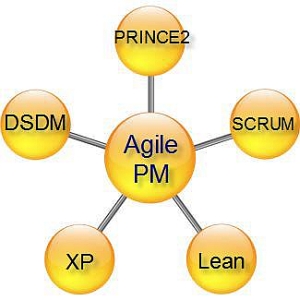An Activity-Based Approach to ERP Project Implementation
 ERP project management involves a range of processes and tools for keeping ERP project implementation on schedule, managing project costs, building and maintaining beneficial relationships with vendors and suppliers, and avoiding ERP project failure through ensuring successful utilization and regular update of ERP project management software.
ERP project management involves a range of processes and tools for keeping ERP project implementation on schedule, managing project costs, building and maintaining beneficial relationships with vendors and suppliers, and avoiding ERP project failure through ensuring successful utilization and regular update of ERP project management software.
In this post we will talk about an activity-based approach to ERP project implementation. We will review the five steps (or activities) of this approach. The information in this article will be helpful to ERP project managers and other professionals who can use the approach to control the critical phases of planning for a new ERP project implementation system.
The Approach
-
Determine Goals and Objectives
The first activity of the ERP project management approach refers to the need for identifying the goals and objectives before the project starts. What is the project trying to achieve? Why? To answer these questions you can establish a steering committee that has two functions:
- Giving advice to ERP project team; and
- Solving issues faced by the team.
The steering committee will guide the team through the ERP project implementation process by giving common direction and support. Then the goals and objectives can be identified with reference to the committee’s guidelines.
ERP project manager must determine the goals and objectives and then make appropriate records to Project Charter. Actually, adding a description of the goals and objectives to Project Charter is the formalized end of the first ERP project management step.
-
Outline Requirements
The second activity for managing ERP projects refers to determining requirements for ERP implementations in advance. This activity requires software engineers and technical specialists to put an ERP project management system in place by:
- making an overview of how this system will operate;
- creating a list of business functions and processes expected to be performed by the new system; and
- establishing a set of policies and procedures for supporting the new ERP PM system.
IT staff members need to take these three steps to make a detailed description of the requirements and then share it with ERP project manager who will add the requirements description to Project Chart.
-
Test ERP Implementation System
To run the testing of the new system, ERP project management team must participate in the Conference Room Pilot (CRP). The CRP is a trial run of pre-defined business processes designed to try the new system in a test environment which approximates to the real business environment. The CRP allows supporting the new ERP project implementation system before going live.
ERP project manager needs to organize IT specialists and software testers to conduct the CRP and involve the end user in the testing process (can be conducted from a couple of days to several weeks). A successful trial run of ERP PM software will pave the way for smooth transition to the Cut-over Phase.
-
Cut-over Phase
This phase is conducted after all of the analysis and testing of the new ERP project implementation software are done. The phase means that 1) data from the legacy system is to be moved to new system and 2) parameters are set, end user training is completed, and interface options are configured. The Cut-over Phase finalizes system preparations before going live.
-
Go-Live Phase
This phase turns into an activity for managing ERP project implementations when the new software system runs the business. Starting the activity means that the ERP project management team has been disbanded and users can manage business processes by using the system. Meanwhile, the goals and objectives identified during the first phase are not achieved yet. The use of the ERP system still requires performance estimations and setting proper expectations.
Perhaps, after several weeks or months the system will require improvement, so ERP project manager must take this possibility into account and analyze the implementation. A set of procedures for extra training and testing should be designed after the ERP project system has been implemented.
These 5 activities are the steps of the approach for managing ERP project implementations. The description of the activities will helpful for ERP planners and managers who need to improve their knowledge on ERP project planning.













